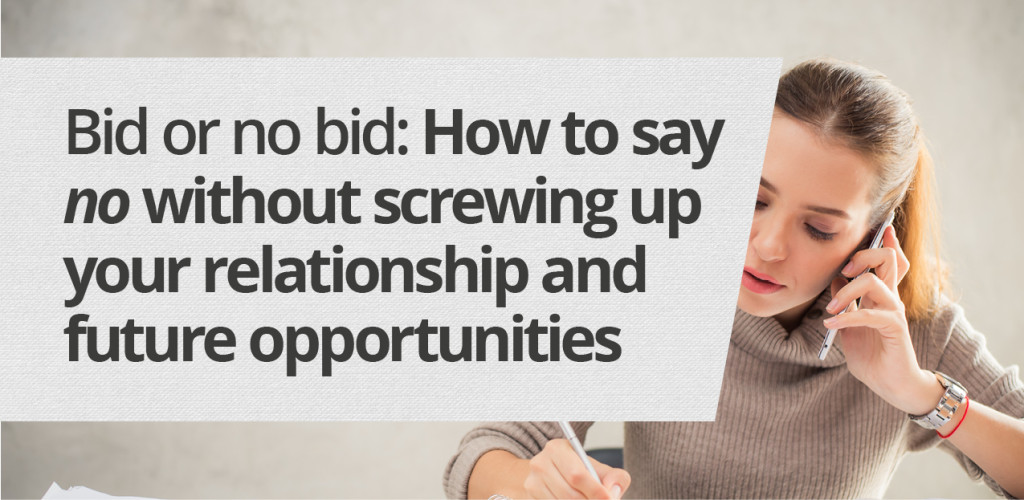Bid or no bid: How to say no without screwing up your relationship and future opportunities
4 September 2017
Bidding for work is something that is now very familiar to most professionals. Whether you are in the private or public sector, the tendering process is increasingly procurement driven with set questions to respond to, and a set process to follow. The line between having a strong relationship and not knowing the client at all have become more blurred when it comes to winning work.

t’s pretty easy to turn down an opportunity if you don’t know the client, have never done the type of work required, and know a more experienced competitor will be bidding. But how do you turn down an opportunity with a client you already work for, or have spent time building a relationship with?
When faced with the decision of whether to bid or not, you are not stupid. You have a pretty good idea of what your chances are. You don’t need to run through a long checklist of criteria, cross-reference it with your database, and generate the decision from a scorecard. So why do you still say yes?
Reasons you say yes
1. To show that you’re generating business leads
2. To keep busy
3. Your manager told you to
4. You want another piece of work with the same client and you’re worried you won’t be invited to bid if you turn this one down
The MAIN reason you say yes
You don’t know how to go back to the client with a ‘no’ without harming the relationship.
How to say thanks, but no thanks
Pick up the phone!
Don’t send a standard ‘thank you for the opportunity…but on this occasion…’ email back, and expect a response. It will never come across in the way you want it to. And even if you explain, in detail, no one has the time to read that. Ring them!
Be honest
The decision-maker will be more understanding if he or she knows the real story. Tell them why you’ve decided not to bid.
“We have a team rule that we never take on more work than we can do a good job of. We have a very full work list and don’t want to compromise the delivery of your project or our current ones.”
“We have a conflict. [Explain the conflict].”
“This one isn’t where our strengths are. We recommend working with a firm who is experienced in abc for this part of the contract. Then when you get to the next stage, we can help you to xyz.”
Offer a fee quote
You are turning the opportunity down because you don’t think you will win. So, any disappointment from the client will not be because they thought you stood a strong chance. It will be because they needed you to compete so they can benchmark the other bidders and negotiate with the winner on their fees. By offering to give them a fee quote, you are showing your willingness to help them. If they accept, it is a good indication that you can build on this relationship.
Plan the next communication
If you want to keep the door open to future opportunities, don’t wait until the next invitation to bid; you’ll have missed your window again to build your relationship. You must make keep regular contact: meet for coffees, send articles/newsletters, connect them with people, invite them to events.
Then, when you are ready to consider a project again, the hiring team won’t be scratching their heads trying to remember who you are.
You know when you’re unlikely to win. You know when to say no. You just need to go back with the right response to keep that relationship on track.
“It’s only by ‘no’ that you can concentrate on the things that are really important.” Steve Jobs


